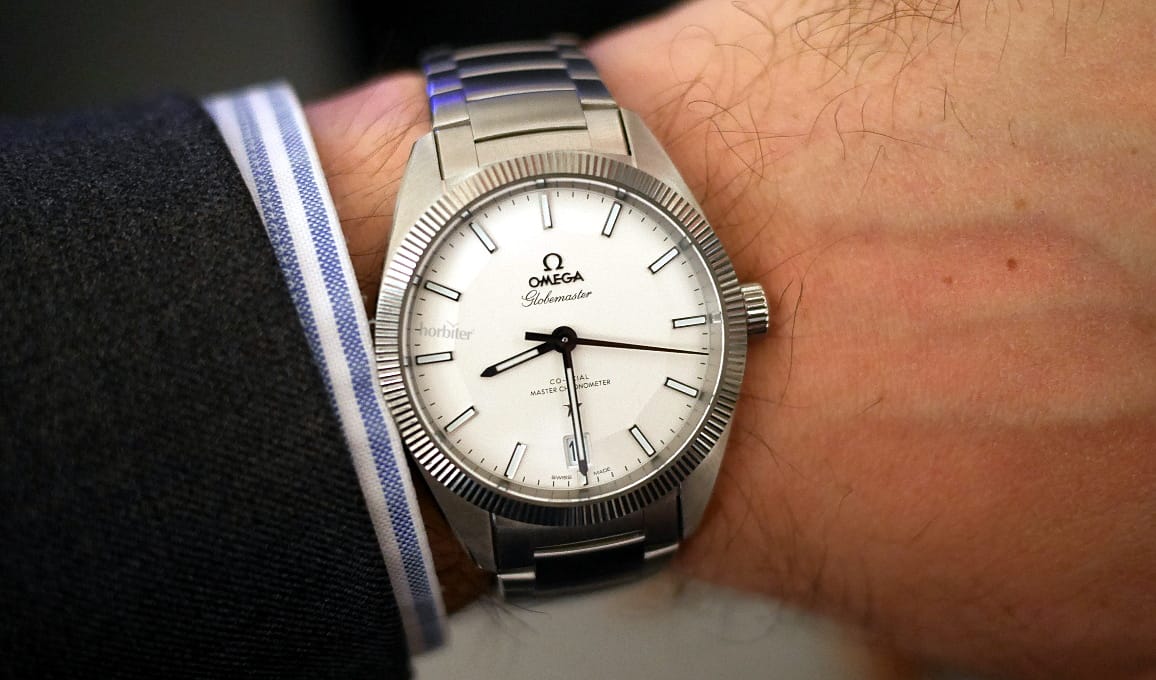Welcome to the world of the Omega Globemaster! Also to that of the first timepiece in the world, made by Omega, to proudly hold the Master Chronometer certification, the new authentication created by Omega in cooperation with the Swiss Institute METAS; a certification that exceeds anything that had so far seen COSC as the maximum certification for the chronometric precision of your timepiece.
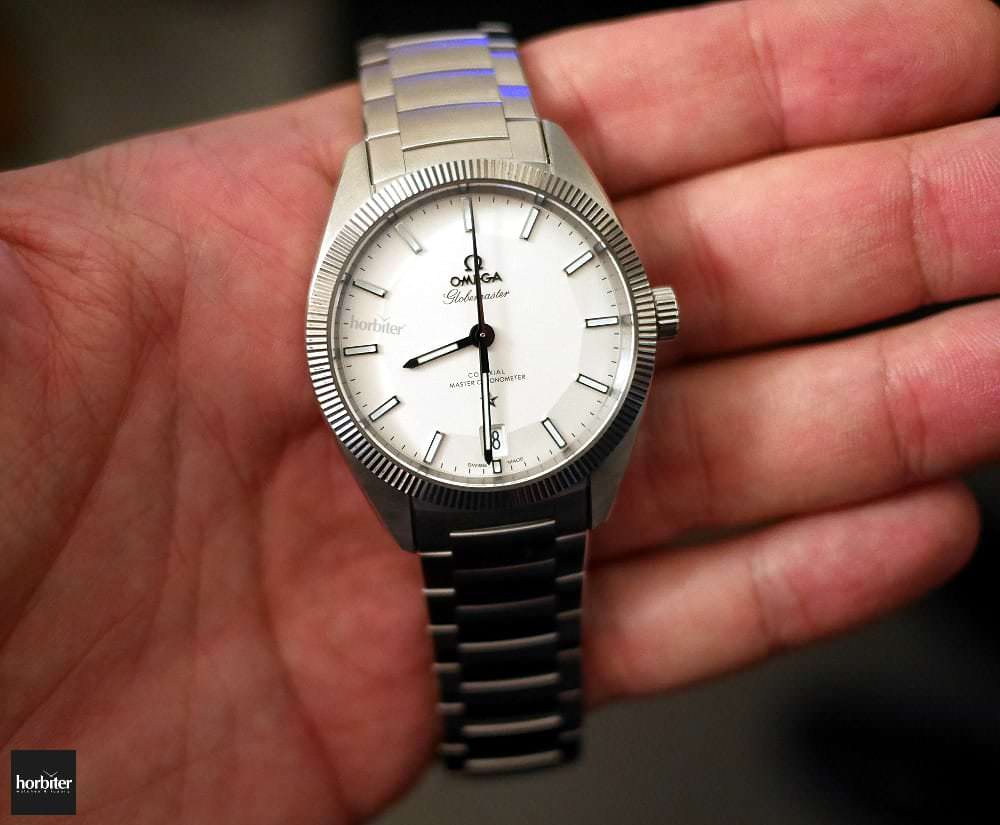 The enormous development that Omega has impressed upon its technology (I have mentioned this in more than article dedicated to some of their recent models), recently found its apex with the making of the first fully antimagnetic movement in the world; this drove Omega to look for a new certification criteria that could better highlight its latest achievements in watchmaking. Stephen Urquhart clearly explained the whole story behind this choice during the official unveiling of the Omega Globemaster, the first timepiece ever to adopt such certification (available, however, for all brands).
The enormous development that Omega has impressed upon its technology (I have mentioned this in more than article dedicated to some of their recent models), recently found its apex with the making of the first fully antimagnetic movement in the world; this drove Omega to look for a new certification criteria that could better highlight its latest achievements in watchmaking. Stephen Urquhart clearly explained the whole story behind this choice during the official unveiling of the Omega Globemaster, the first timepiece ever to adopt such certification (available, however, for all brands).
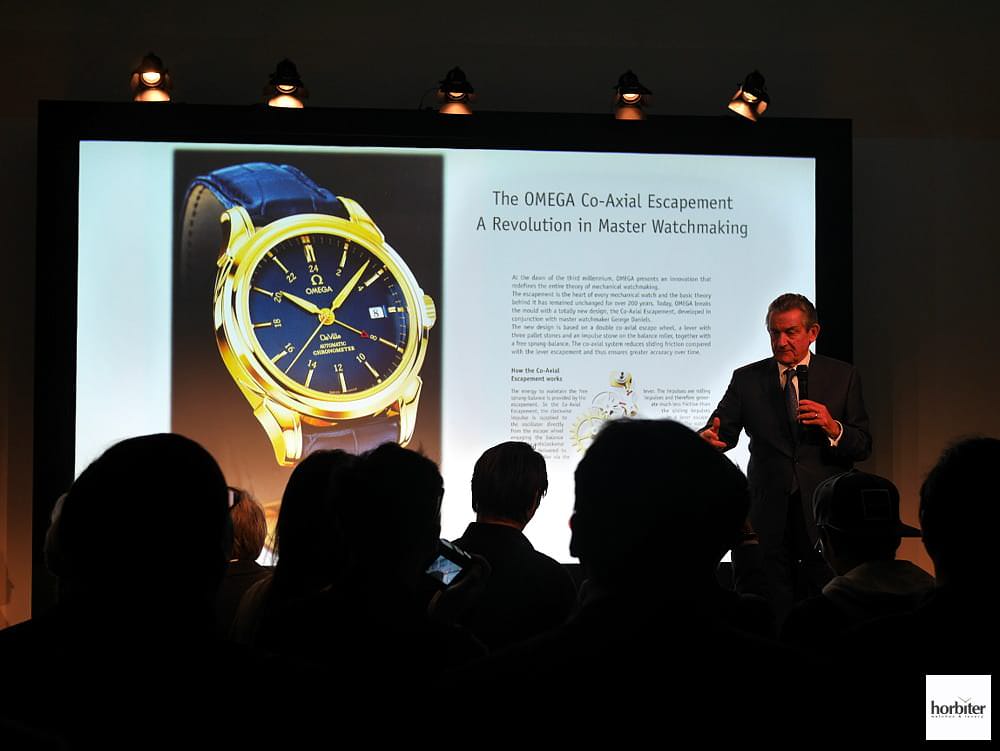 After a brief summary of its recent history, with the launch, in 1999, of the first caliber to adopt a co-axial escapement, the introduction of the silicon balance spring in 2008 and the launch of an impressive series of movements all realized in-house, Urquhart ended its presentation with the unveiling of Omega's big novelty for Baselworld 2015.
After a brief summary of its recent history, with the launch, in 1999, of the first caliber to adopt a co-axial escapement, the introduction of the silicon balance spring in 2008 and the launch of an impressive series of movements all realized in-house, Urquhart ended its presentation with the unveiling of Omega's big novelty for Baselworld 2015.
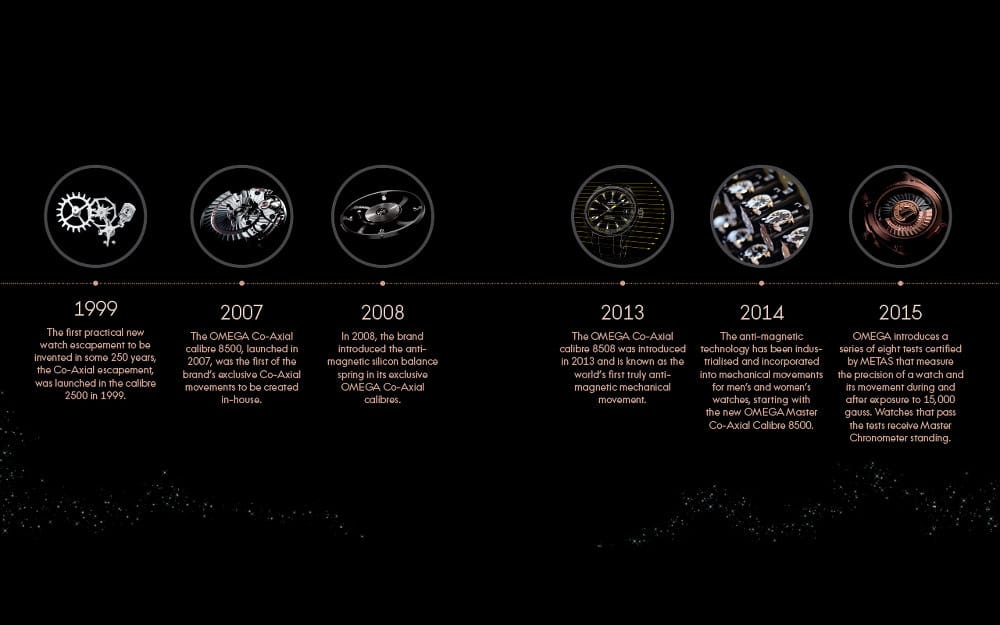 The Omega Globemaster draws aesthetical inspiration from two models in Omega's history: the 1952 Constellation and the 1968 Constellation. It takes the typical pie-pan dial form the first, and the fluted bezel from the second. Its round case has straight, elongated lugs that smoothly curve around your wrist.
The Omega Globemaster draws aesthetical inspiration from two models in Omega's history: the 1952 Constellation and the 1968 Constellation. It takes the typical pie-pan dial form the first, and the fluted bezel from the second. Its round case has straight, elongated lugs that smoothly curve around your wrist.
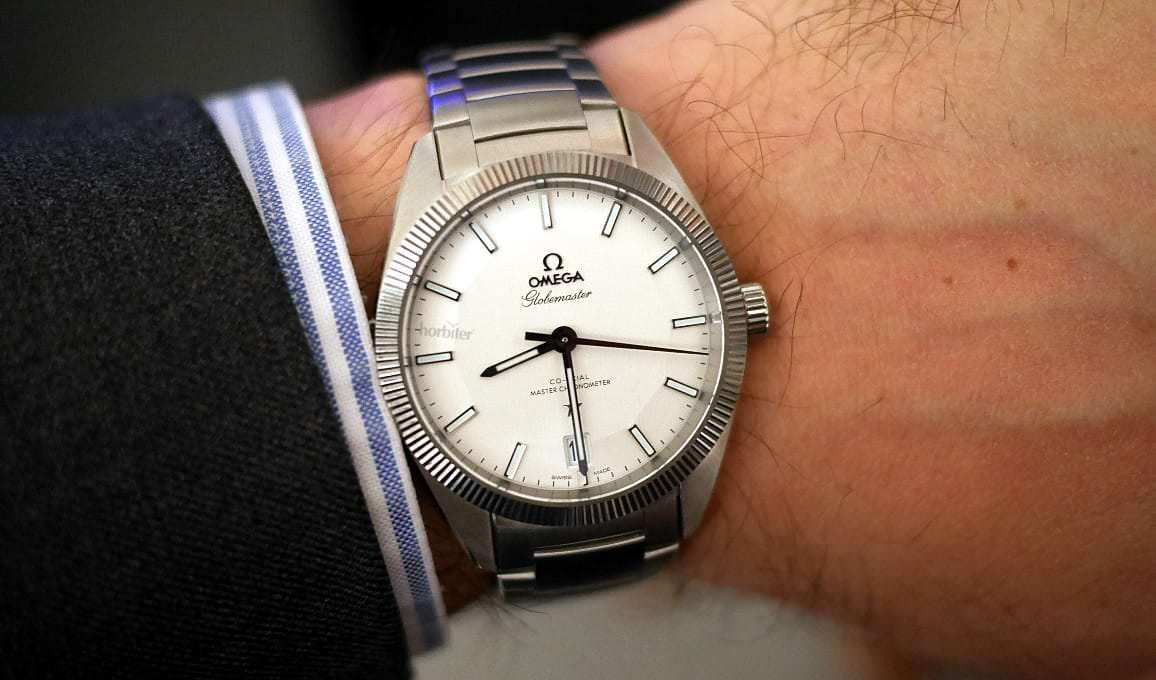 Each Omega Globemaster has to undergo eight series of tests (we will have an in-depth analysis of these at a later stage), and so far the one relating to magnetic resistance up to 15000 Gauss, can only be passed by Omega.
Each Omega Globemaster has to undergo eight series of tests (we will have an in-depth analysis of these at a later stage), and so far the one relating to magnetic resistance up to 15000 Gauss, can only be passed by Omega.
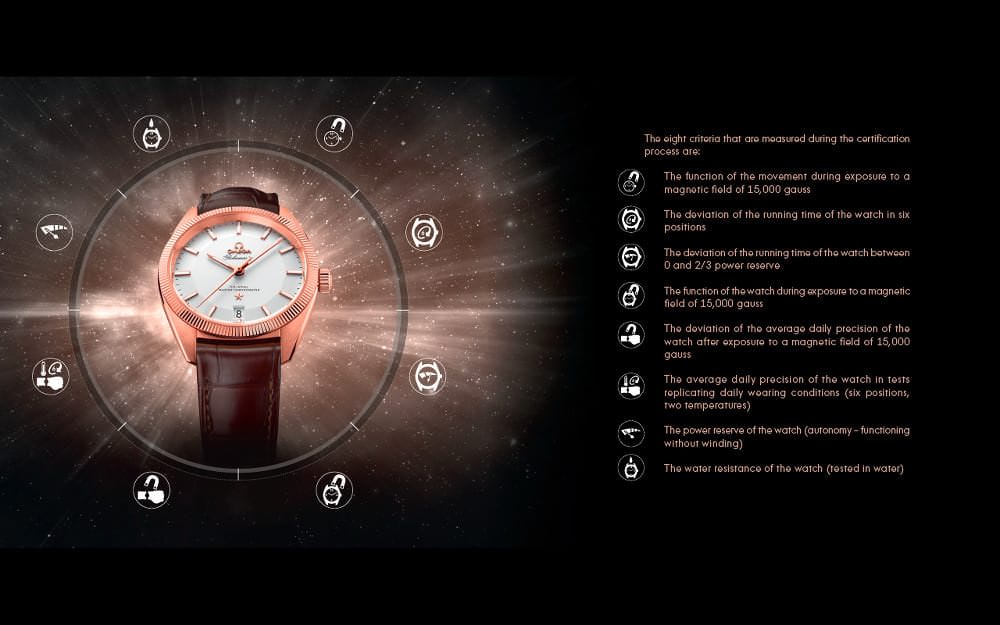 Each of these timepieces will come with a card with an identification number, so that each customer will be able to check, on line, how its timepiece performed in each of these tests. A good example not only of technology, but of a more direct and straightforward relationship between watchmaker and client. Do we consider the COSC obsolete? Let's just say that each Master Chronometer certified watch is submitted to COSC tests, even before those of METAS. Certainly Omega becomes the point of reference for the entire Swiss watchmaking industry, definitely raising the bar of chronometric precision and preparing Swiss watchmaking to what I would call a "chronometric precision challenge" that is coming from Japan.
Each of these timepieces will come with a card with an identification number, so that each customer will be able to check, on line, how its timepiece performed in each of these tests. A good example not only of technology, but of a more direct and straightforward relationship between watchmaker and client. Do we consider the COSC obsolete? Let's just say that each Master Chronometer certified watch is submitted to COSC tests, even before those of METAS. Certainly Omega becomes the point of reference for the entire Swiss watchmaking industry, definitely raising the bar of chronometric precision and preparing Swiss watchmaking to what I would call a "chronometric precision challenge" that is coming from Japan.
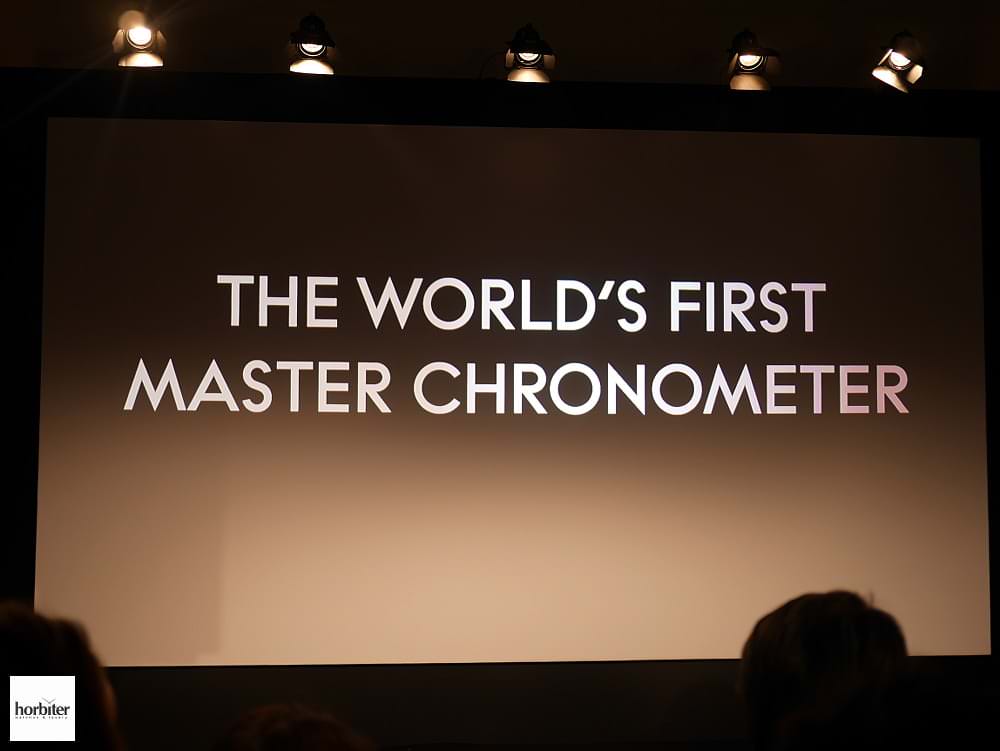 The Omega Globemaster, that launches this challenge, is a classic three hands timepiece with date and a 39mm case, made in all the combinations of state-of-the-art materials and technologies available from Omega: steel, gold and steel, Sedna gold. The dial has a soleil decoration on the steel and bicolor models, and an opaline silver on the gold version. The movement is caliber Omega Co-Axial Master Chronometer 8900/8901. The case back is quite original as it is transparent but, just in the middle, designers have inserted a medallion, applied before the back is secured to the case via 4 tiny screws.
The Omega Globemaster, that launches this challenge, is a classic three hands timepiece with date and a 39mm case, made in all the combinations of state-of-the-art materials and technologies available from Omega: steel, gold and steel, Sedna gold. The dial has a soleil decoration on the steel and bicolor models, and an opaline silver on the gold version. The movement is caliber Omega Co-Axial Master Chronometer 8900/8901. The case back is quite original as it is transparent but, just in the middle, designers have inserted a medallion, applied before the back is secured to the case via 4 tiny screws.
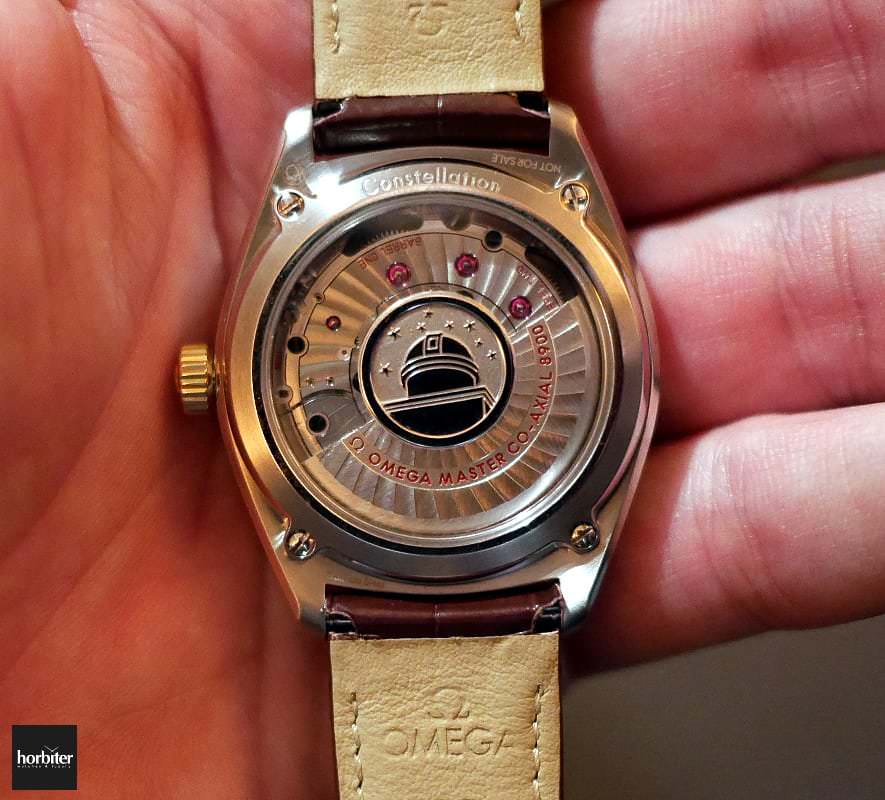 The image of an observatory is printed on the medallion, surrounded by a sky with 8 symbolical stars. These represent the eight awards that Omega has won between the ‘40s and the ‘50s, during some chronometric competitions held in some of the most prestigious observatories in the world. More details and an in depth review of the complete Globemaster range soon after the fair.
The image of an observatory is printed on the medallion, surrounded by a sky with 8 symbolical stars. These represent the eight awards that Omega has won between the ‘40s and the ‘50s, during some chronometric competitions held in some of the most prestigious observatories in the world. More details and an in depth review of the complete Globemaster range soon after the fair.
(Photo credit: Horbiter®'s proprietary photo-shooting)
Gaetano C. @Horbiter®
@Gaetano Cimmino
